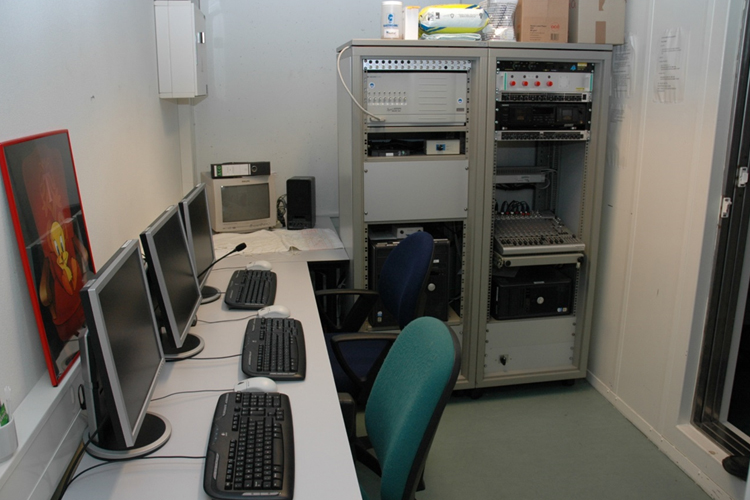EEG lab
EEG labs each contain two rooms, one for the test participants and one for the experimenter. There is also a small kitchen, where the electrodes are fitted and cleaned.
Equipment
The experimenter’s room includes amplifiers, computers and viewing screens. The amplifiers have either 32 or 64 channels. A channel represents an electrode position on the test participant’s head. An EEG can show where and when activity is occurring in the participant’s brain. Currently, the EEG labs have 3 x 64 channels and 1 x 32 channels.
Also in the experimenter’s room, there is a viewing screen displaying the stimuli, a headset and a control panel. In some labs a video can be shown during ‘passive tasks’.
Process
EEG readings are taken while the test participant is performing a task. After amplification and conversion into a digital signal, the data are saved on a computer. They are also projected onto a monitor, so that the experimenter can assess the quality.
Research
Much of the research carried out in the EEG labs involves response-time tasks. Test participants are asked, for example, to press a button when they see a red square. Their EEG is measured simultaneously, so the tester can see which specific processes are taking place between the stimulus and the response. Usually, there is about half a second between these two events.
‘Event-Related Potentials’, or ERPs, are examined as well. These refer to the brain’s average responses to the stimuli. Between the period right immediately before the stimulus to one to 1.5 seconds later, EEG and ERP allow the sequence of preparation, attention, response selection, locomotion and evaluation in the brain to be tracked.
Attention
EEG can also be used to measure the test participants’ attention, by showing the response of the participant’s brain to stimuli which s/he must ignore, or in fact respond to. This is a convenient way of performing research in children with attention problems, such as children with ADHD or those who act too impulsively. Their brains react more strongly to stimuli that they should ignore than the brains of children without such conditions.
Research into attention to emotional stimuli is conducted as well.
Psychopharmacological research
EEG is also applied in psychopharmacological research. Here, this relates to the primary and secondary effects of medicines on cognitive functioning and brain mechanisms, for example with the use of EEG frequency analyses. An example of such a study is testing the effect of medications for Alzheimer on healthy individuals.
Advantages of EEG
One advantage of EEG compared to other techniques is that the brain’s response can be measured immediately. With fMRI, for example, you only get to see an indirect response much later, after the brain has processed stimuli. EEG is also inexpensive and easier to use than an MRI scanner.

